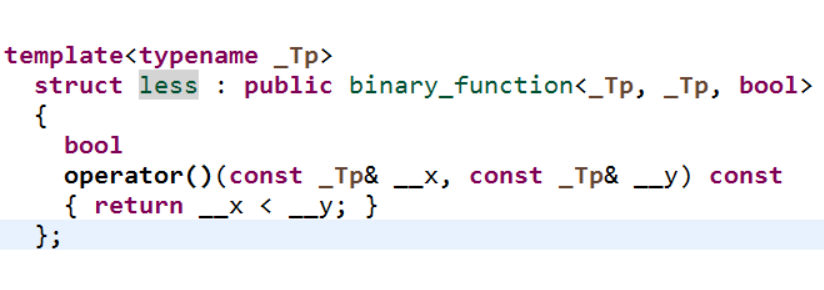
C++仿函数
重载函数调用操作符的类,其对象称为函数对象,因为使用重载的()时,其行为类似于函数的调用,因此也称之为仿函数。但是仿函数是一个类,并不是一个函数。
仿函数
仿函数是一个类,其特点是:
- 函数对象在使用时可以像普通函数那样调用,可以有返回值
- 函数对象超出普通函数的概念,函数对象有自己的状态,可以设置一个成员属性,记录函数调用的次数,时间等等
- 函数对象可以作为参数进行传递
1 | #include<iostream> |
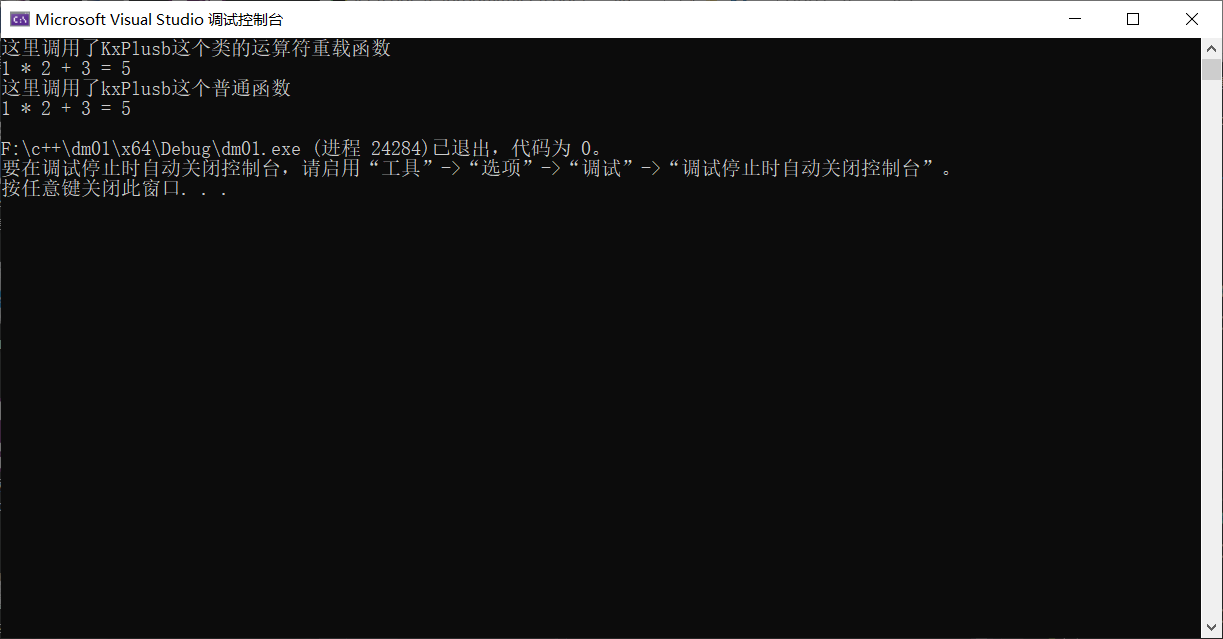
一元谓词
谓词是返回值为布尔类型的仿函数,如果operator()只接收一个参数,那么称之为一元谓词。
1 | #include<iostream> |
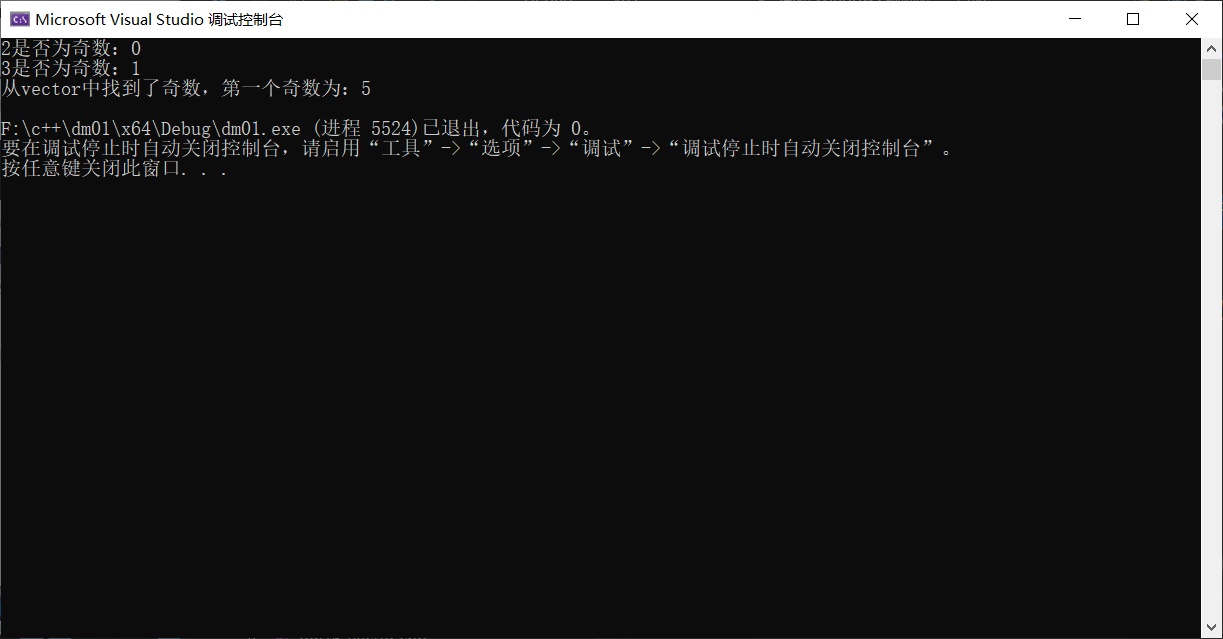
二元谓词
如果operator()接收两个参数,那么称之为二元谓词。
1 | #include<iostream> |
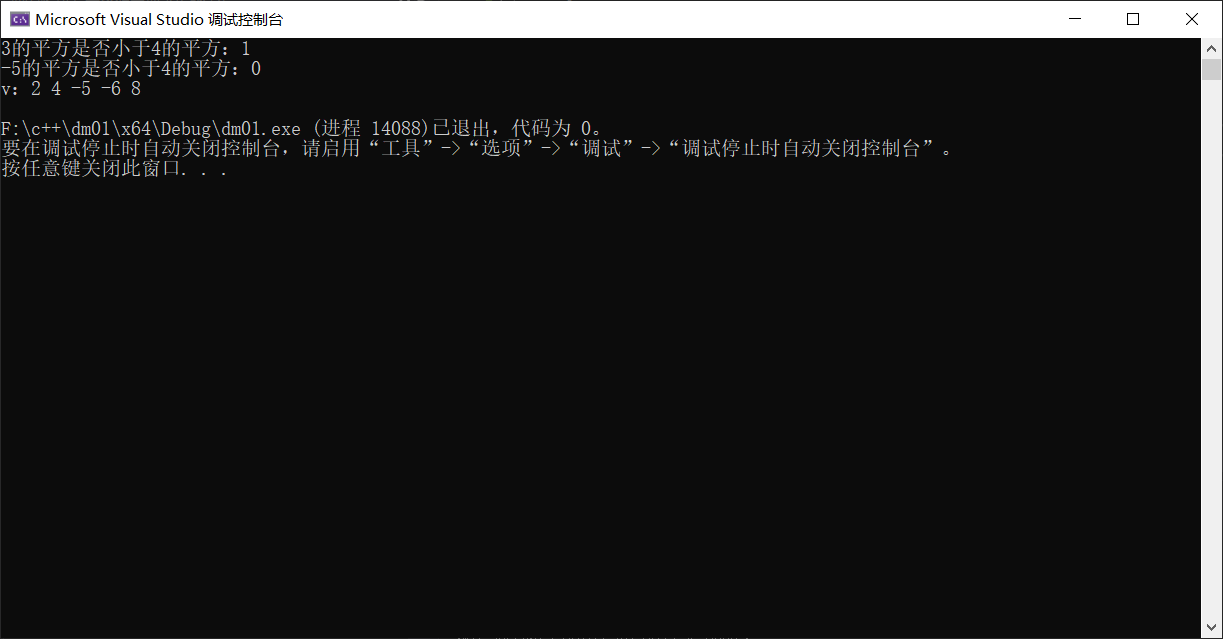
内建算术仿函数
C++提供了6个内建算数仿函数,可以导入functional头文件进行使用
- plus 加法二元仿函数,
- minus 减法二元仿函数
- multiplies 乘法二元仿函数
- divides 除法二元仿函数
- modulus 取模二元仿函数
- negate 取负一元仿函数
1
2
3
4
5
6
7
8
9
10
11
12
13
14
15
16
17
18
19
20
21
22
23
24
25
26#include<iostream>
#include<functional>
using namespace std;
int main() {
plus<int> pl;
cout << "20 + 10 = " << pl(20, 10) << endl;
minus<int> mi;
cout << "20 - 10 = " << mi(20, 10) << endl;
multiplies<int> mu;
cout << "20 * 10 = " << mu(20, 10) << endl;
divides<int> di;
cout << "20 / 10 = " << di(20, 10) << endl;
modulus<int> mo;
cout << "20 % 10 = " << mo(20, 10) << endl;
negate<int> ne;
cout << "-10 = " << ne(10) << endl;
return 0;
}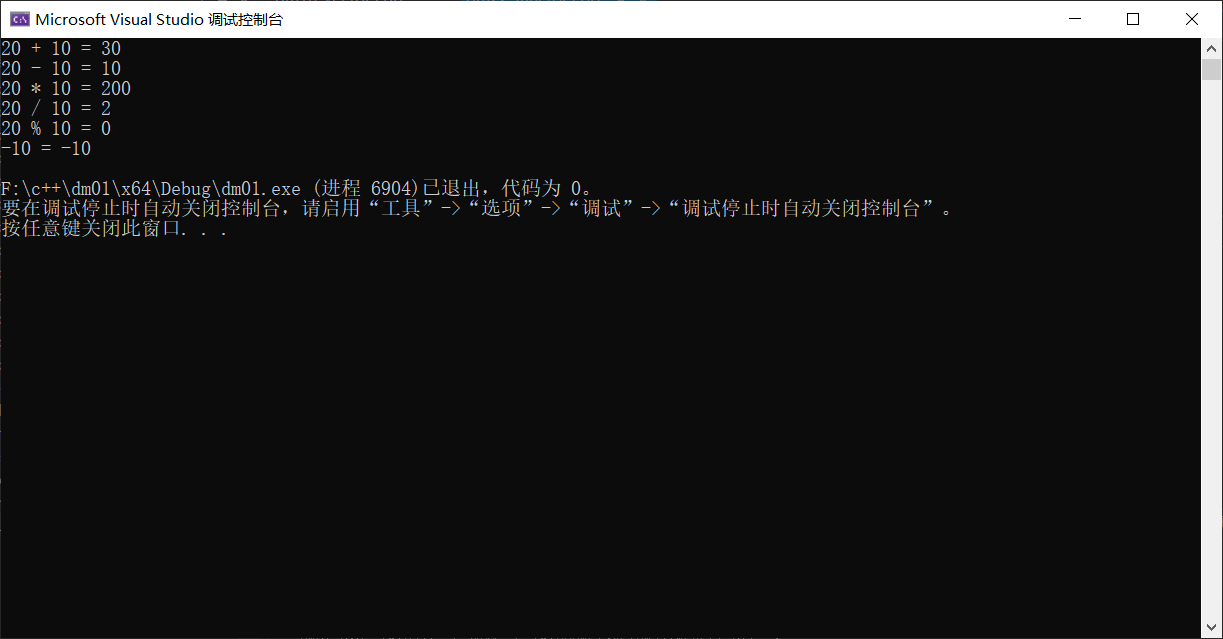
内建关系仿函数
C++提供了6个内建关系仿函数,可以导入functional头文件进行使用
- equal_to 等于二元仿函数,
- not_equal_to 不等于二元仿函数
- greater 大于二元仿函数
- greater_equal 大于等于二元仿函数
- less 小于二元仿函数
- less_equal 小于等于二元仿函数
1
2
3
4
5
6
7
8
9
10
11
12
13
14
15
16
17
18
19
20
21
22
23
24
25
26
27
28
29
30
31
32#include<iostream>
#include<functional>
using namespace std;
int main() {
equal_to<int> eq;
cout << "3是否等于3:" << eq(3, 3) << endl;
cout << "2是否等于3:" << eq(2, 3) << endl;
not_equal_to<int> ne;
cout << "3是否不等于3:" << ne(3, 3) << endl;
cout << "2是否不等于3:" << ne(2, 3) << endl;
greater<int> gr;
cout << "3是否大于3:" << gr(3, 3) << endl;
cout << "3是否大于2:" << gr(3, 2) << endl;
greater_equal<int> ge;
cout << "3是否大于等于3:" << ge(3, 3) << endl;
cout << "3是否大于等于2:" << ge(3, 2) << endl;
less<int> ls;
cout << "2是否小于3:" << ls(2, 3) << endl;
cout << "3是否小于3:" << ls(3, 3) << endl;
less_equal<int> le;
cout << "2是否小于等于3:" << le(2, 3) << endl;
cout << "3是否小于等于3:" << le(3, 3) << endl;
return 0;
}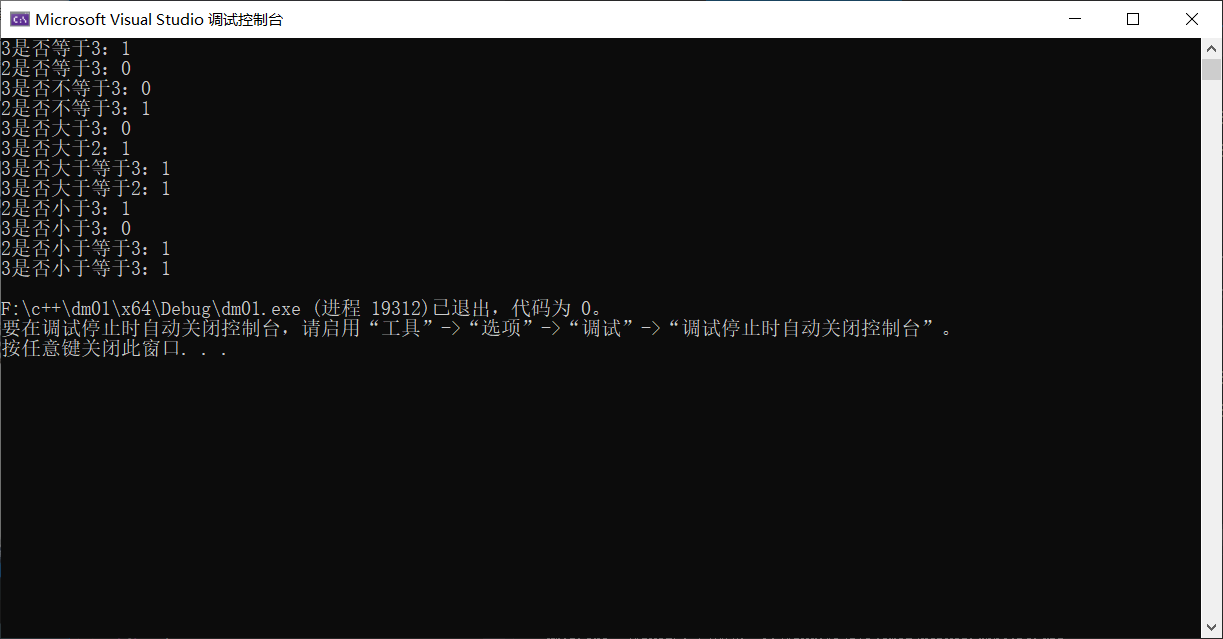
内建逻辑仿函数
C++提供了3个内建逻辑仿函数,可以导入functional头文件进行使用
- logical_and 与二元仿函数,
- logical_or 或二元仿函数
- logical_not 非一元仿函数
1
2
3
4
5
6
7
8
9
10
11
12
13
14
15
16
17
18
19
20
21
22
23
24#include<iostream>
#include<functional>
using namespace std;
int main() {
logical_and<bool> la;
cout << "true && true = " << la(true, true) << endl;
cout << "false && true = " << la(false, true) << endl;
cout << "true && false = " << la(true, false) << endl;
cout << "false && false = " << la(false, false) << endl;
logical_or<bool> lo;
cout << "true || true = " << lo(true, true) << endl;
cout << "false || true = " << lo(false, true) << endl;
cout << "true || false = " << lo(true, false) << endl;
cout << "false || false = " << lo(false, false) << endl;
logical_not<bool> ln;
cout << "!true = " << ln(true) << endl;
cout << "!false = " << ln(false) << endl;
return 0;
}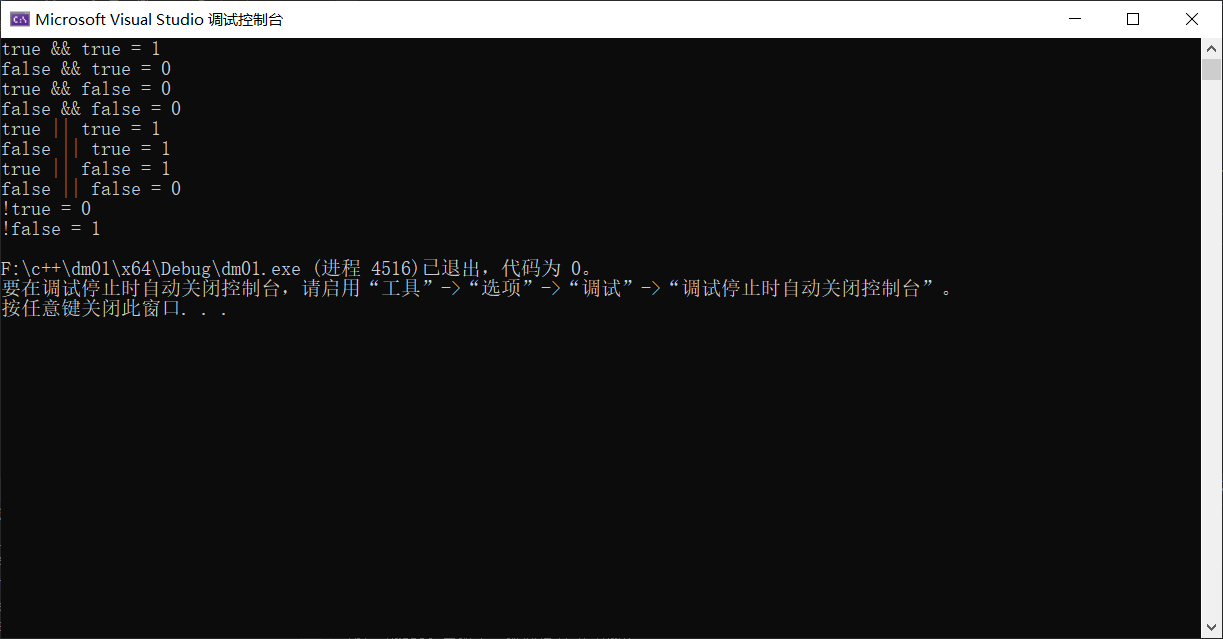
C++小结
仿函数是C++STL算法的基础,在这里我们先掌握基本的仿函数定义,以及C++的一些内建仿函数。在后面我们将要学习一些常用的算法,其中如果想按照自己需要的方式改进标准算法,则需要传入一元谓词或者二元谓词,在这一讲的find_if和sort函数中也有所涉及。